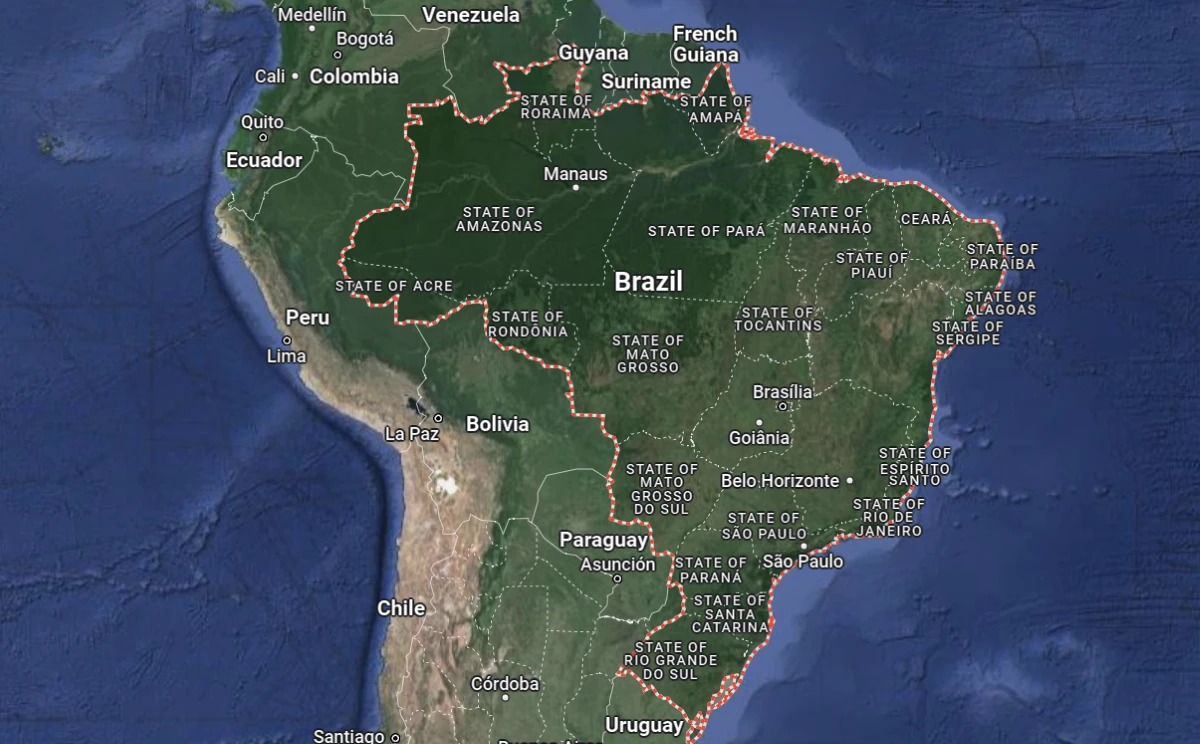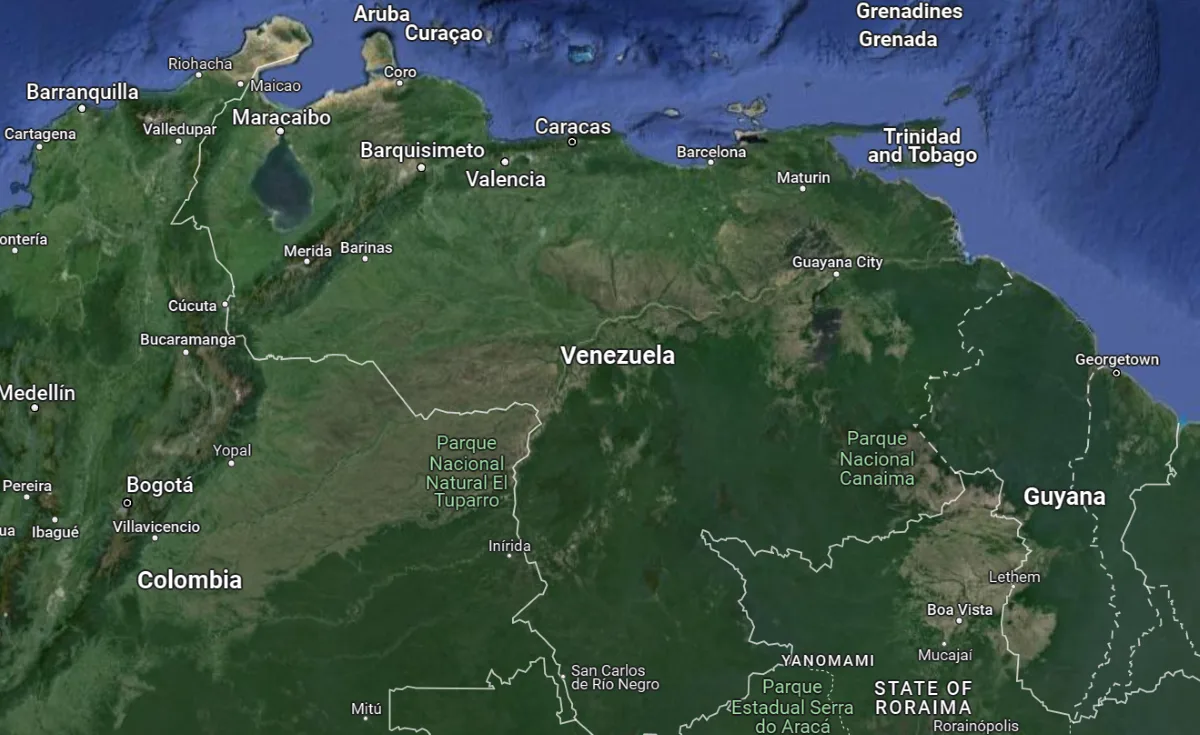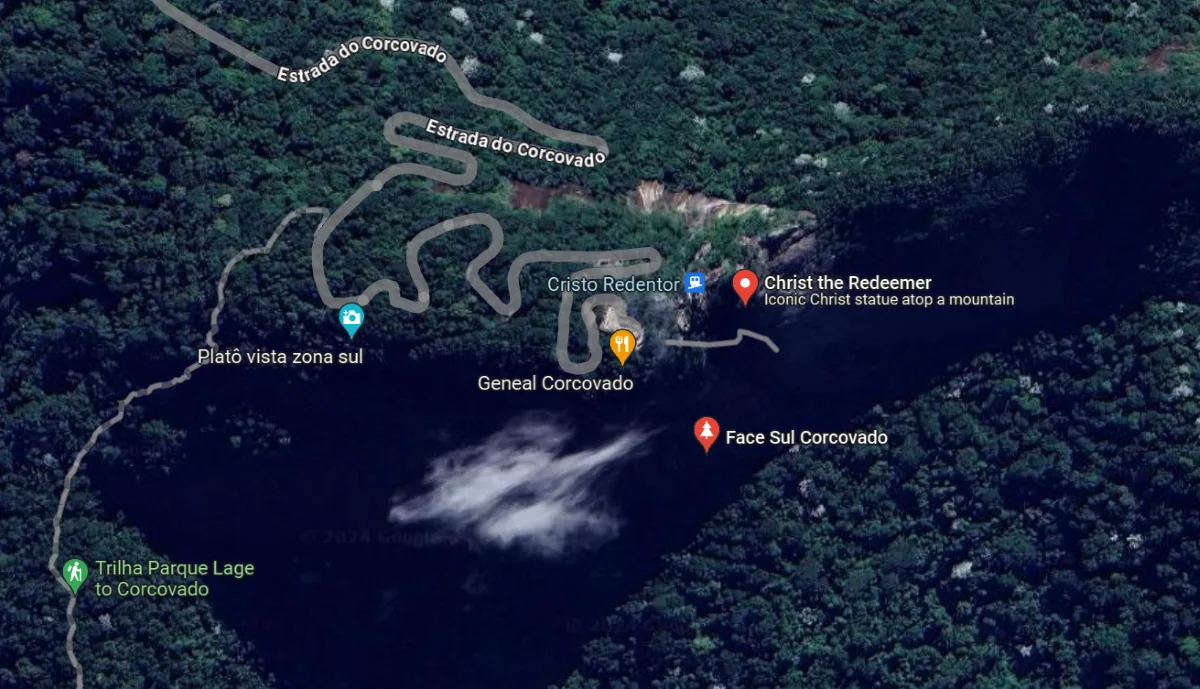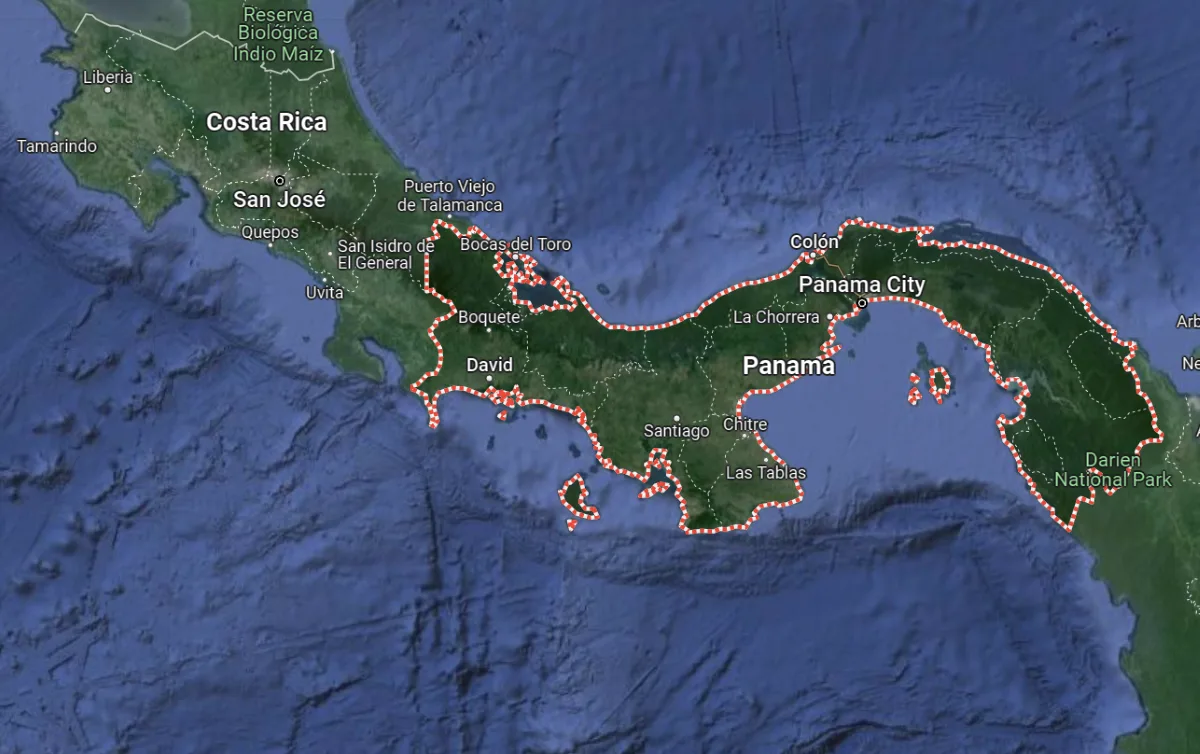If you’ve ever wanted to delve into the rich tapestry that is South America, you’re in the right place.
This continent’s geography is as diverse as its culture, from the Amazon rainforest’s thick canopy to the Andean peaks‘ snow-capped heights.
With our guide to the South America map, you’ll get a grasp on this continent’s unique layout.
Overview of South America
Spanning over 17.84 million square kilometers and housing more than 423 million people, South America is a continent of charm and diversity.
Here, you’ll find a cocktail of unique geography, rich wildlife, cultural vibrance, historical relics, and more. Embrace the journey through this continent’s beautiful tapestry of landscapes.
The geography of South America is nothing short of breathtaking. From the snow-capped Andes Mountains stretching across the western edge, to the vast Amazon rainforest with its ecological wonder at the heart.
You’ll experience the dramatic contrasts of nature’s palette. Let’s delve into it:
Andes Mountains
These, the longest continental mountain ranges in the world, are the backbone of the continent’s scenic beauty.
Amazon Rainforest
Known as ‘the lungs of the Earth’, the Amazon equates to over half of the planet’s remaining rainforests.
South America boasts an astonishing cultural heterogeneity. Indigenous cultures, European colonial influence, and African heritage – they all coexist here, weaving a vibrant cultural tapestry.
Cultural hubs like Brazil, Argentina, and Peru are just a few highlights. This continent doesn’t just stop at nature and culture, it’s also a vault of fascinating history.
From the ancient ruins of Machu Picchu in Peru to the historical district of Pelourinho in Brazil, South America holds many narratives within its boundaries.
In the midst of this broad spectrum, South America’s wildlife deserves a headline of its own. Home to unrivaled biodiversity, this continent hosts many endemic species that can’t be found anywhere else in the world.
From Andean condors soaring the skies to capybaras roaming the wetlands, the wildlife here is as varied as the continent itself.
| Area | Population |
|---|---|
| 17.84 million sq km | 423+ million |
Geographic Features

If you glance at a South America map, you’ll notice it’s not only the fourth largest continent but also one bursting with diverse geographic features.
From the towering Andes mountains to the expansive Amazon rainforest, South America is a tapestry of landscapes that both startles and captivates.
The Andes, one of the highlights on any South American map, extend over seven countries and are touted as the longest continental mountain range in the world.
Here, you’ll find Aconcagua, the highest mountain outside Asia. It reaches an astounding height of 22,837 feet.
Turning your attention to the continent’s eastern and central regions, the vast, pulsating Amazon rainforest commands your focus.
Sprawling over nine countries, it’s one of the world’s largest and most biodiverse regions. Fun fact: this rainforest contributes to the Earth’s oxygen levels more than any other single source.
As if these weren’t enough, South America throws in the Pantanal, the world’s largest tropical wetland area, and the Atacama Desert, the driest place on earth to boot! Surprised?
South America is nothing if not geographically impressive.
Diversity continues underwater with the Amazon River, the world’s largest by volume, discharging more water than the next seven largest rivers combined. Boasting a complex system of over 1,100 tributaries, it’s a lifeline for countless species and communities.
And finally, nestled in the southeastern corner, are the Pampas, large, fertile plains that span Argentina, Uruguay, and Brazil. Known for their rich soils, they form the agricultural backbone of these countries.
Whether it’s snow-capped peaks, lush rainforests, arid deserts, vibrant rivers, or fertile plains, South America’s distinct geographic features paint a full-bodied portrait of nature’s brilliance that can’t be ignored.
Maybe it’s time you take a closer look at a South America map? Who knows what wonders you’ll discover next? Now, let’s carry on exploring the cultural richness this continent has to offer.

Countries in South America
Let’s embark on a journey exploring the 12 independent countries that grace the South American continent. Each country unfurls a fascinating tapestry of culture, history, and natural beauty.
At the continent’s western edge, you’ll find the Republic of Chile. Far-reaching from the driest desert in the world, the Atacama, to the snow-covered peaks of the Andes, it’s a land of stunning contrasts.
Just north lies Peru, home to modern culture, ancient history, and the mysterious ruins of Machu Picchu.
Gazing east, you encounter Brazil, the largest country in South America. Tropical rainforests, vibrant cities, iconic landmarks, the Amazon River, and a riotous mix of music, dance, and color define Brazil.
Directly south is Argentina and Uruguay. Argentina’s Pampas plains are a bedrock of agricultural riches, while Uruguay offers tranquillity with its sandy beaches and rolling hills.
Mid-continent bursts forth Bolivia, landlocked and rich in natural minerals. Nearby Paraguay, wonderful and warm, is known for its vast plains and engaging folklore.
Finally, Colombia, Ecuador, Guyana, Suriname, and Venezuela complete our list. These countries composite to make South America an overarching brushstroke of natural beauty and cultural richness.
Each country is unique, bursting with a diverse range of landscapes and cultures. And without forgetting the territories such as the Falkland Islands held by the UK, and French Guiana governed by France, that too, have stories to tell.
South America’s map is truly a rich tapestry that continues to enchant and intrigue.
Don’t hold back! Dive deep into exploring these wonders and relish the diversity they bring to our world. South America awaits your curious and adventurous spirit.

Popular Landmarks
Delving deeper into South America, you’ll find an array of landmarks that beckon tourists year-round. These aren’t just ordinary stops on a sightseeing tour. They’re symbols of the continent’s rich tapestry of cultures, histories, and breathtaking landscapes.
In Brazil, Christ the Redeemer towers over Rio de Janeiro. This iconic statue is one of the New Seven Wonders of the World.
Imagine standing at its base, looking up at this colossal work, it’s truly an unforgettable experience.
Travel south to Argentina and take in the grandeur of the Iguazu Falls. Partially located in Brazil as well, it’s famously dubbed as the ‘falls that flow around an island’. You won’t find the productivity of waterfalls like these anywhere else on the map.
Make your way to Peru and you’ll stumble upon Machu Picchu. This 15th-century Inca citadel, located high in the Andes, offers stunning views and is a testament to the architectural prowess of its ancient builders.
Chile offers the stark contrasts of the Atacama Desert, the driest place on Earth, and the snow-capped Andes Mountains. It’s a literal game of extremes in one country.
Lastly, Venezuela sums up its popular attraction in one word: Angel Falls, the tallest waterfall on Earth. A journey to these locations can take you from lush lowlands to misty mountaintops.
| Landmark | Country |
|---|---|
| Christ the Redeemer | Brazil |
| Iguazu Falls | Argentina, Brazil |
| Machu Picchu | Peru |
| The Atacama Desert and Andes Mountains | Chile |
| Angel Falls | Venezuela |
Exploring the Diversity of Central America
Central America is a vibrant region that bridges the continents of North and South America, consisting of seven countries: Belize, Costa Rica, El Salvador, Guatemala, Honduras, Nicaragua, and Panama.
Known for its rich biodiversity, stunning landscapes, and diverse cultures, Central America offers a tapestry of experiences for travelers.
From the ancient ruins of the Maya civilization in Guatemala and Belize to the pristine beaches of Costa Rica and Panama, the region boasts an array of natural wonders.
Central America is also steeped in history, with colonial towns and archaeological sites that provide insight into its past.
With a warm climate year-round and a welcoming spirit, Central America invites visitors to explore its lush rainforests, volcanic peaks, and crystal-clear waters, making it a captivating destination for adventure seekers, nature lovers, and cultural enthusiasts alike.

Geography Overview of Central America
Central America is a narrow isthmus connecting North and South America, bordered by the Pacific Ocean to the west and the Caribbean Sea to the east.
It comprises seven countries: Belize, Costa Rica, El Salvador, Guatemala, Honduras, Nicaragua, and Panama. The region features diverse landscapes including tropical rainforests, volcanic mountains, and coastal plains.
Notable geographical features include the Mesoamerican Barrier Reef and the Panama Canal. Central America is known for its rich biodiversity and varied climate, with dense rainforests and temperate highlands.
Central America’s Iconic Landmarks
Central America boasts a wealth of iconic landmarks, from the ancient ruins of Tikal in Guatemala to the engineering feat of the Panama Canal.
Honduras showcases Copán’s Maya ruins, while Costa Rica offers the majestic Arenal Volcano and Monteverde Cloud Forest Reserve.
Belize features Ambergris Caye and the Great Blue Hole, and Guatemala’s Lake Atitlán provides serene vistas.
Nicaragua presents architectural marvels like the Leon Cathedral and Granada’s colonial charm, while Panama’s Bocas del Toro enchants with Caribbean allure.
These landmarks encapsulate Central America’s rich history, natural wonders, and cultural diversity.
Frequently Asked Questions (FAQs)
What are the main languages spoken in South America?
The main languages spoken in South America are Spanish, Portuguese, and to a lesser extent, English, French, and indigenous languages such as Quechua, Aymara, and Guarani.
What are some famous landmarks in South America?
Some famous landmarks in South America include Machu Picchu in Peru, Christ the Redeemer statue in Brazil, Iguazu Falls on the border of Brazil and Argentina, Torres del Paine National Park in Chile, and the Galapagos Islands in Ecuador.
What experiences are offered by these South American landmarks?
These South American landmarks offer a unique and unforgettable travel experience, showcasing the architectural sophistication of past civilizations and the continent’s natural beauty.
Why should travelers visit South America?
Travelers should visit South America to experience its diverse cultures, rich history, stunning architecture, and breathtaking landscapes, as personified by its iconic landmarks.
What’s the connection between these landmarks and the location’s history or culture?
Each of these landmarks offers a glimpse into the history and culture of their regions, whether through the architectural genius of ancient civilizations or the diversity of the natural landscapes.
What types of landscapes can be found in South America?
In South America, landscapes range from lush lowlands to misty mountaintops, symbolized by attractions such as the Atacama Desert, the Andes Mountains, and Angel Falls.
Conclusion
- So you’ve journeyed with us through the rich tapestry of South America.
- You’ve discovered its vibrant cultures, deep-rooted histories, and breathtaking landscapes.
- From the towering Christ the Redeemer in Brazil to the thunderous Iguazu Falls in Argentina, the mystical Machu Picchu in Peru, Chile’s stark Atacama Desert and Andes Mountains, and Venezuela’s soaring Angel Falls.
- Each destination has painted a vivid picture of South America’s architectural achievements and natural wonders.
- As you’ve seen, this continent is more than just a spot on the map. It’s a world of experiences, waiting for you to explore.
- Whether you’re a seasoned traveler or planning your first adventure, South America’s iconic sites beckon you to venture beyond the map and into the heart of this magnificent continent.

